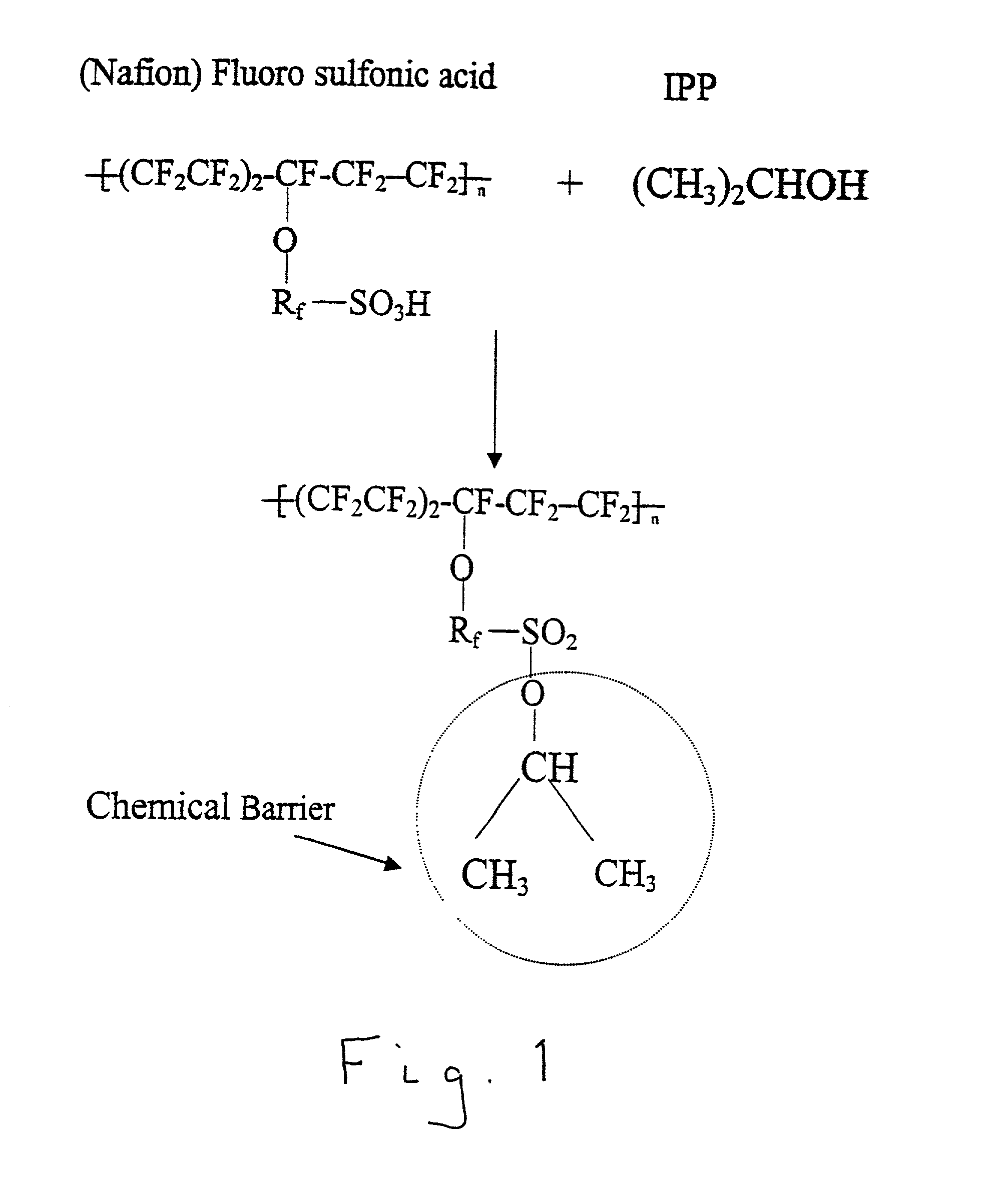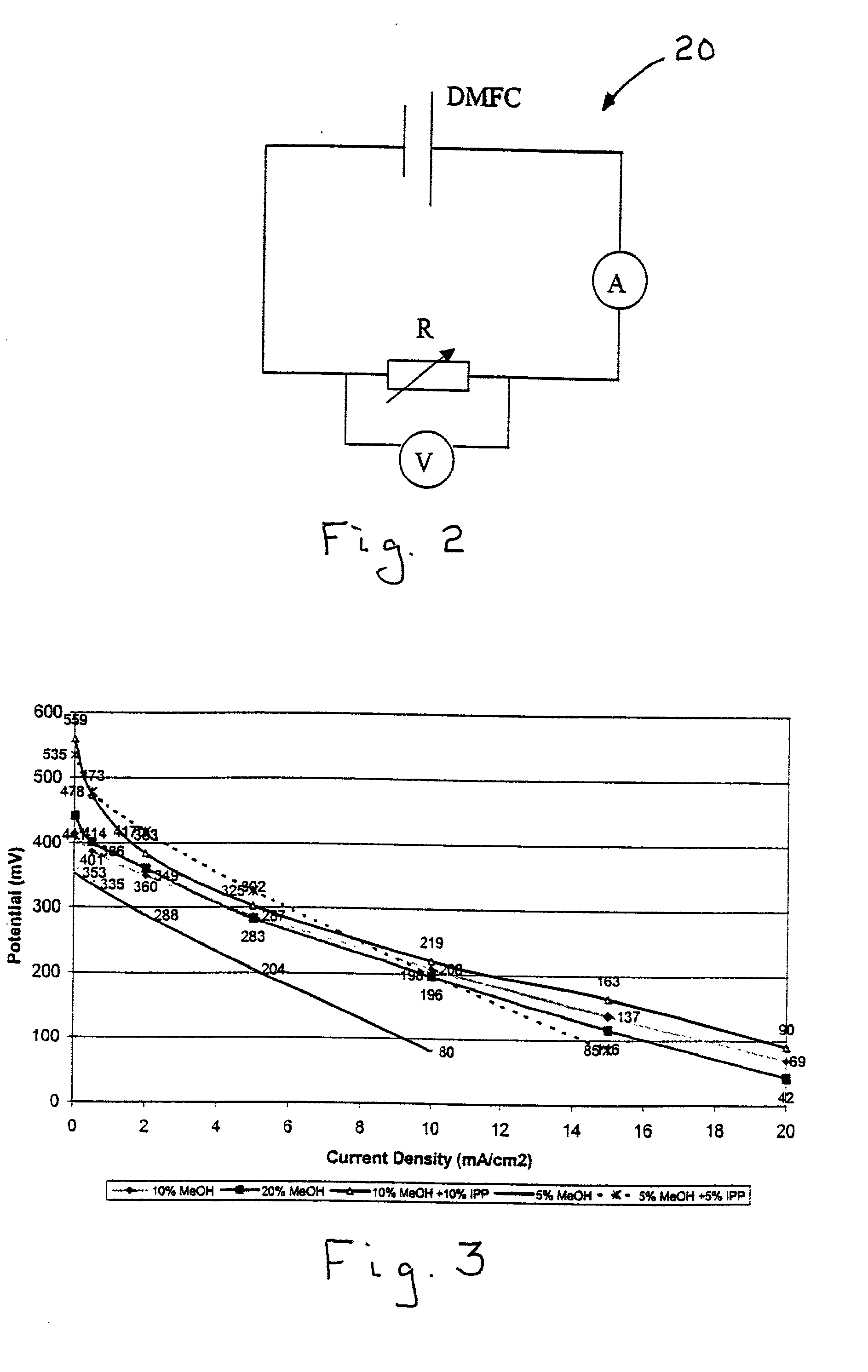Chemical barriers in electrochemical devices
a technology of electrochemical devices and barriers, applied in the field of electrochemical devices, can solve the problems of reducing the attainable cell voltage, the inability to replace rechargeables, and the general undesirable methanol crossover from the anode to the cathod
- Summary
- Abstract
- Description
- Claims
- Application Information
AI Technical Summary
Benefits of technology
Problems solved by technology
Method used
Image
Examples
Embodiment Construction
[0017] The invention claimed herein is an electrochemical device comprising an electrolyte having an anode side and a cathode side, at least one consumable carbonaceous material disposed on the anode side, and crossover means for reducing crossover of the at least one consumable carbonaceous material through the electrolyte to the cathode side. In contrast to conventional systems in which physical barriers are employed as the crossover means for reducing crossover of the at least one consumable carbonaceous material through the electrolyte to the cathode side, this invention employs chemical barriers, which, in addition to substantially preventing crossover of the at least one consumable carbonaceous material crossover, do not significantly reduce proton conductivity. In operation, the consumable carbonaceous material utilized in the electrochemical device is disposed in an aqueous solution. The concept of this invention is the addition of one or more additives to the solution which...
PUM
| Property | Measurement | Unit |
|---|---|---|
| thick | aaaaa | aaaaa |
| molecular size | aaaaa | aaaaa |
| organic | aaaaa | aaaaa |
Abstract
Description
Claims
Application Information
 Login to View More
Login to View More - R&D
- Intellectual Property
- Life Sciences
- Materials
- Tech Scout
- Unparalleled Data Quality
- Higher Quality Content
- 60% Fewer Hallucinations
Browse by: Latest US Patents, China's latest patents, Technical Efficacy Thesaurus, Application Domain, Technology Topic, Popular Technical Reports.
© 2025 PatSnap. All rights reserved.Legal|Privacy policy|Modern Slavery Act Transparency Statement|Sitemap|About US| Contact US: help@patsnap.com


